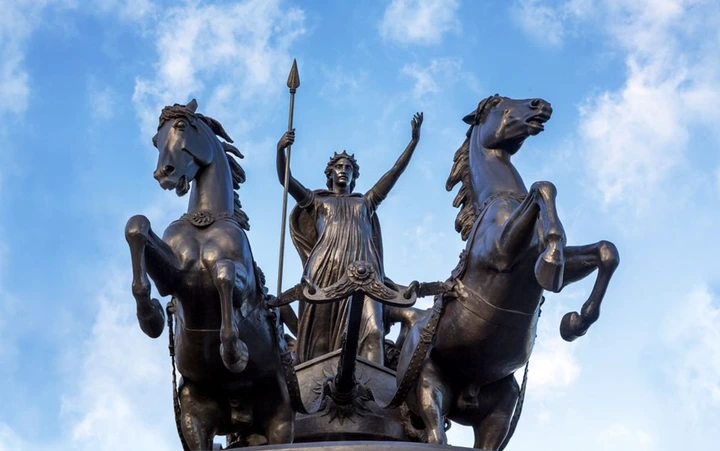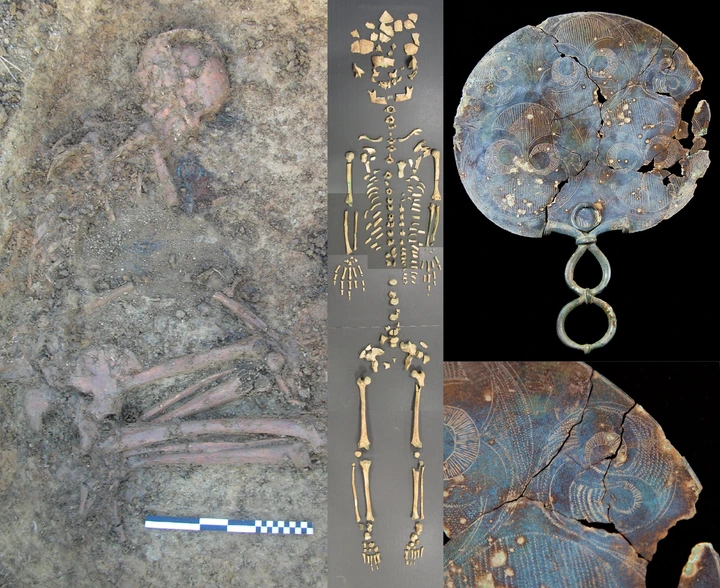The pioneering Iron Ladies.

View pictures in App save up to 80% data.
When the Romans first entered the British Isles, they found a land ruled by warrior queens and other high-status women – or at least, that’s how Julius Caesar and other witnesses described the situation in this new and strange territory. And while modern historians have tended to distrust these ancient Roman accounts as over-exaggerated and inaccurate, a new analysis of 2,000-year-old DNA suggests that women really were the big dogs in prehistoric Britain.
The idea that these ancient societies may have revolved around females has previously been supported by finds in Celtic cemeteries in Dorset, southern England, where a tribe known as the Durotriges lived from roughly 100 BCE to 100 CE. At these sites, female burials typically contain the most lavish grave goods, suggesting that women may have held positions of political, military, and social influence.
Building on these previous discoveries, researchers have now sequenced the DNA of 55 individuals from the Durotrigian burial site of Winterborne Kingston, along with two more from other nearby cemeteries. To gain a sense of how these ancient societies were structured, the study authors analyzed levels of diversity in mitochondrial DNA – which is inherited only from the mother – as well as the Y chromosome, which is transmitted from father to son.
Consequently, these two segments of the genome can be utilized to track an individual's maternal and paternal ancestries, revealing that over two-thirds of the individuals interred at Winterborne Kingston are descendants of a previously unidentified maternal lineage.
“We reconstructed a family tree with many different branches and found most members traced their maternal lineage back to a single woman, who would have lived centuries before,” explained study author Dr Lara Cassidy in a statement. “In contrast, relationships through the father’s line were almost absent,” as evidenced by high levels of Y-chromosome diversity among the cemetery’s men. Such a finding suggests that these men all came from elsewhere, while the women were local.
"According to Cassidy, this indicates that husbands relocated to their wives' communities after marriage, suggesting that land may have been inherited through the female lineage. This practice is referred to as matrilocality, which stands in opposition to the patrilocal societies that have traditionally been viewed as the standard in much of prehistory."
“Cassidy notes that this is the inaugural documentation of such a system in European prehistory, suggesting a trend towards female social and political empowerment. While this phenomenon is uncommon in contemporary societies, it may not have always been so.”

View pictures in App save up to 80% data.
Curious about the prevalence of matrilocal societies in ancient times, the researchers analyzed the genomes of individuals from 156 burial sites throughout Europe, dating from the Neolithic period to the Iron Age. Intriguingly, they discovered signs of matrilocal practices at six distinct locations, all located in Iron Age England.
“Throughout Britain, we observed cemeteries indicating that the majority of individuals could trace their lineage back to a limited group of female ancestors,” stated study author Professor Dan Bradley. “In Yorkshire, for instance, a prominent maternal line was established prior to 400 BCE. We were taken aback to discover that this was a common occurrence with ancient origins across the island.”
Bringing things full circle, the researchers say their findings provide credence to the tales told by the likes of Julius Caesar and other Roman authors. According to these reports, the earliest British rulers were women, including the legendary warrior queens Boudicca and Cartimandua, both of whom kicked a significant chunk of Roman butt in the first century CE.
“It’s been suggested that the Romans exaggerated the liberties of British women to paint a picture of an untamed society,” explains excavation director Dr Miles Russell. “But archaeology, and now genetics, implies women were influential in many spheres of Iron Age life.”
The study is published in the journal Nature.
 Top-rated Choice
Top-rated Choice